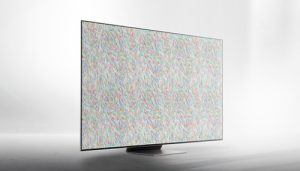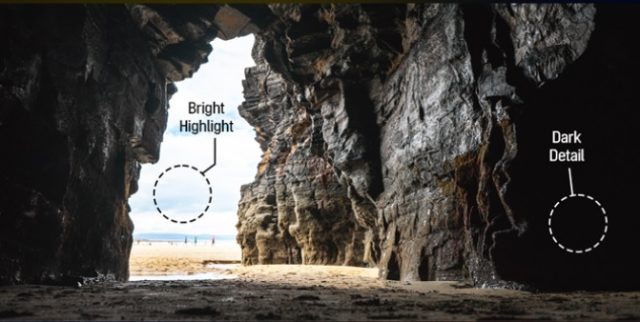
The Consumer Electronics Show, the country's largest tech exhibition, is always filled with exciting new products and concepts. But one of my favorite things about the show is the spotlight it puts on the emerging technologies driving these product launches.
One piece of next-generation tech generating buzz at this year's CES is QD-OLED. A variation of OLED from Samsung Display, the technology has made a splash through big TV and PC monitor reveals. But what exactly is QD-OLED, how different is it from regular OLED, and do we really need another acronym?
What is QD-OLED?

Whatever its branding, don't be fooled. This isn't a brand-new technology. It's just a revamped version of OLED that offers the "widest range of color expression among the existing display technology," Samsung Display claims. Samsung says its QD-OLED TVs can cover 99.8 percent of the DCI-P3 gamut, CNET reports. That's very colorful, but it's not beyond what we'd expect of a premium OLED TV or monitor today.
Long story short, Samsung's QD-OLED panel is supposed to be like traditional OLED, which is known for its impressive contrast brought on by rich, deep blacks, but with more consistently vivid color across brightness levels. Samsung claims its QD-OLED panels will deliver more details in highlighted areas, whereas standard OLED panels may look more washed out and bring better color to darker areas, so shadows aren't overpowering. The company also claims that the tech delivers superior viewing angles because of how quantum dots work (we'll get to that).

QD-OLED is also a big deal for observers of the OLED TV wars. LG Display makes the vast majority of larger OLED panels (like for TVs and monitors) today. Samsung, meanwhile, has offered just one short-lived OLED TV and has been focusing on QLED, a more colorful type of LED that can't replace OLED, for its high-end TVs. QD-OLED represents a new panel option for OLED TV brands, including Samsung, LG, Vizio, Panasonic, Philips, and PC monitor vendors.
QD-OLED vs. OLED
The difference between QD-OLED and today's OLED is the use of tiny semiconductor particles called "quantum dots." When struck by a certain frequency of light, a quantum dot can emit light. The color of that light depends on its wavelength, which is affected by the size of the quantum dot, which ranges from 2–10 nm.

Again, larger OLED displays mostly come from LG Display. LG Display's OLED panels use yellow and blue OLED materials to emit a white light. The light is applied to a filter with red, green, and blue subpixels to create the many colors you see on-screen. Some newer OLED panels, particularly HDR TVs, add a white subpixel for extra brightness, since OLEDs are generally dimmer than LED panels.
QD-OLED, on the other hand, uses a blue OLED material to generate its light source because, Samsung Display says, blue "has the strongest light energy." That light goes through a layer of quantum dots to create what's supposed to be a greater range of colors. QD-OLED displays also use a TFT layer to control the two layers.

Why does Samsung add quantum dots to the equation? To get "precise colors at every contrast level," Samsung explains, thus avoiding a washed-out appearance. Samsung says quantum dots have a simple structure and use light more efficiently, since light isn't partially eaten up by a filter. QD-OLED is also supposed to fight poor viewing angles, since quantum dots emit light uniformly. According to CNET, Samsung Display gets its quantum dots from a "specialized supplier."
Don't expect QD-OLED to be dramatically brighter than an LED display or even a standard OLED display. Samsung Display claims that a full QD-OLED TV can hit up to 200 nits full-screen or 1,000 nits with a 10 percent patch, according to CNET. CNET noted that it measured the LG C1 OLED TV at 800 nits with a 10 percent patch, while an LED TV can reach 2,000 nits. Meanwhile, the QD-OLED PC monitor announced at CES this week can hit 250 nits full-screen and up to 1,000 nits. With high-end PC monitors surpassing 1,400 nits, there's a clear disadvantage.
However, the ability to boost brightness in smaller patches could help QD-OLED deliver its claimed superior highlights. And extreme contrast and color (plus detailed highlights and shadows) can mitigate the downsides of a dimmer display. But we'll have to see QD-OLED in action to know if it's enough of an upgrade.
Starting in Q2 2022, all of LG Display's OLED TV panels will feature its new OLED EX technology, which uses deuterium compounds and machine learning for up to 30 percent more brightness than traditional OLED, the company says.
reader comments
217